Ranunculus bulbs, also known as Persian buttercups, are popular among gardeners for their vibrant colors and delicate blooms. With its many petals and resembling roses, these bulbs add a touch of elegance and charm to any garden or landscape.
However, planting and caring for ranunculus bulbs can be daunting for beginners. From choosing the right location to proper planting techniques, there are several key steps to ensure a successful and bountiful display of ranunculus flowers.
How to plant ranunculus bulbs We will provide you with all the information and tips to plant them and help them thrive properly. Whether you are a seasoned gardener looking to add some variety to your garden or a novice seeking to grow your first batch of these beautiful flowers, this article will serve as a comprehensive guide to help you achieve your desired results.
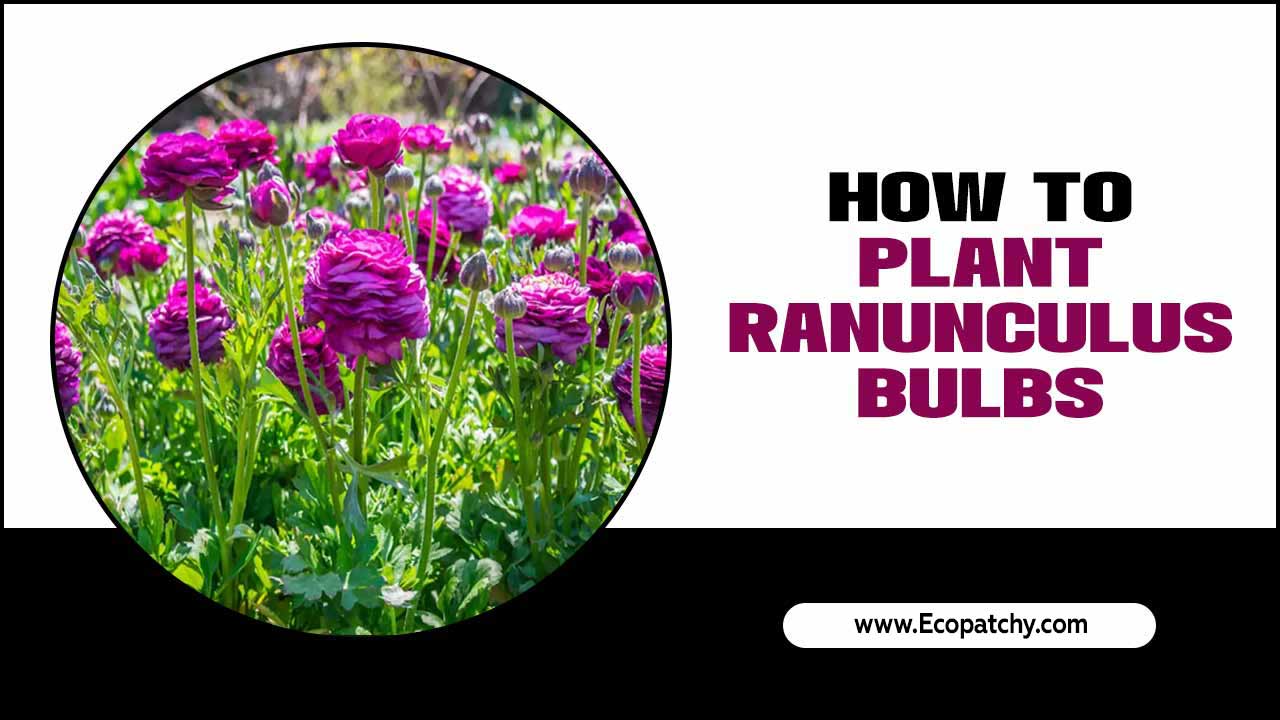
What Are Ranunculus Bulbs?
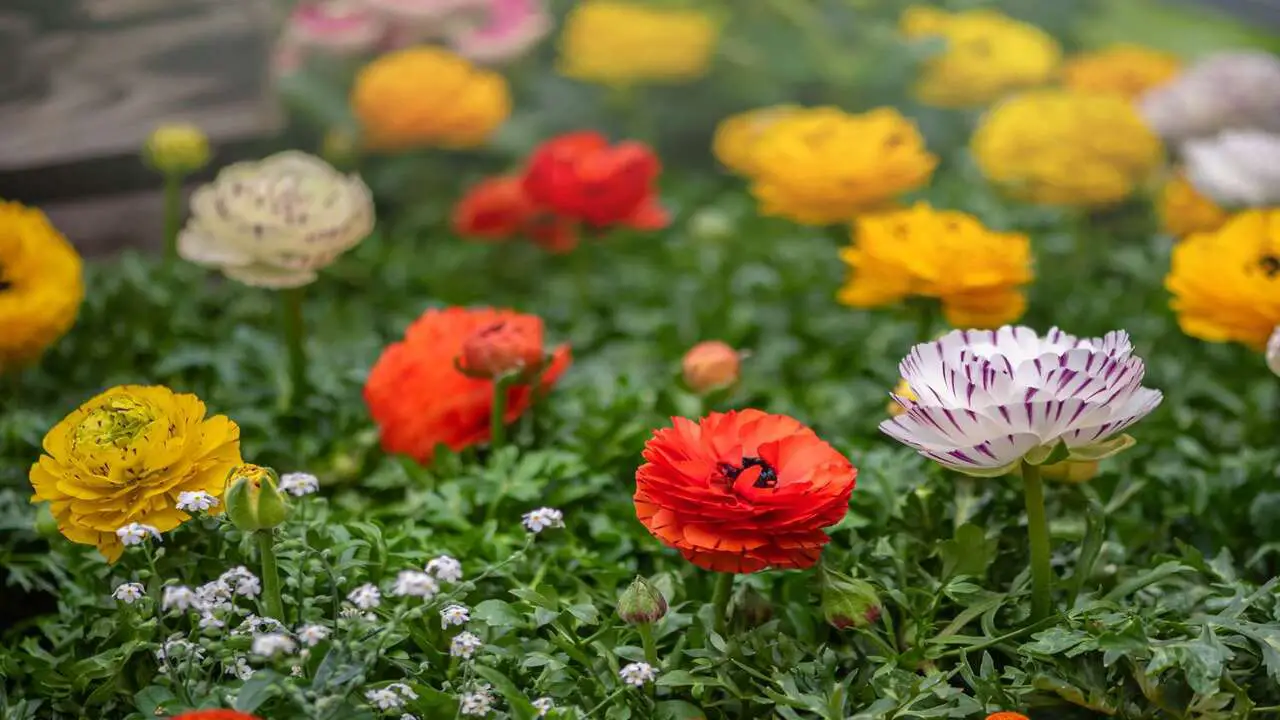
Ranunculus bulbs are a type of flowering bulb that produce beautiful, colorful blooms. These bulbs belong to the Ranunculaceae family and are known for their vibrant colors and delicate petals. Depending on your climate, they are typically planted in the fall or early spring and will begin to bloom in the late spring or early summer.
Ranunculus bulbs can be planted in the ground or containers, making them a versatile choice for any garden. They require well-drained soil and full sun to thrive. With proper care and attention, these bulbs can bring a burst of color to your garden year after year.
How To Plant Ranunculus Bulbs? 6 Steps

Planting ranunculus bulbs is a simple process that can yield beautiful blooms in your garden. By following these steps, you’ll be on your way to enjoying a vibrant display of ranunculus blooms in your garden. Here are six steps to help how To Plant Ranunculus Bulbs:
Selecting The Right Bulbs
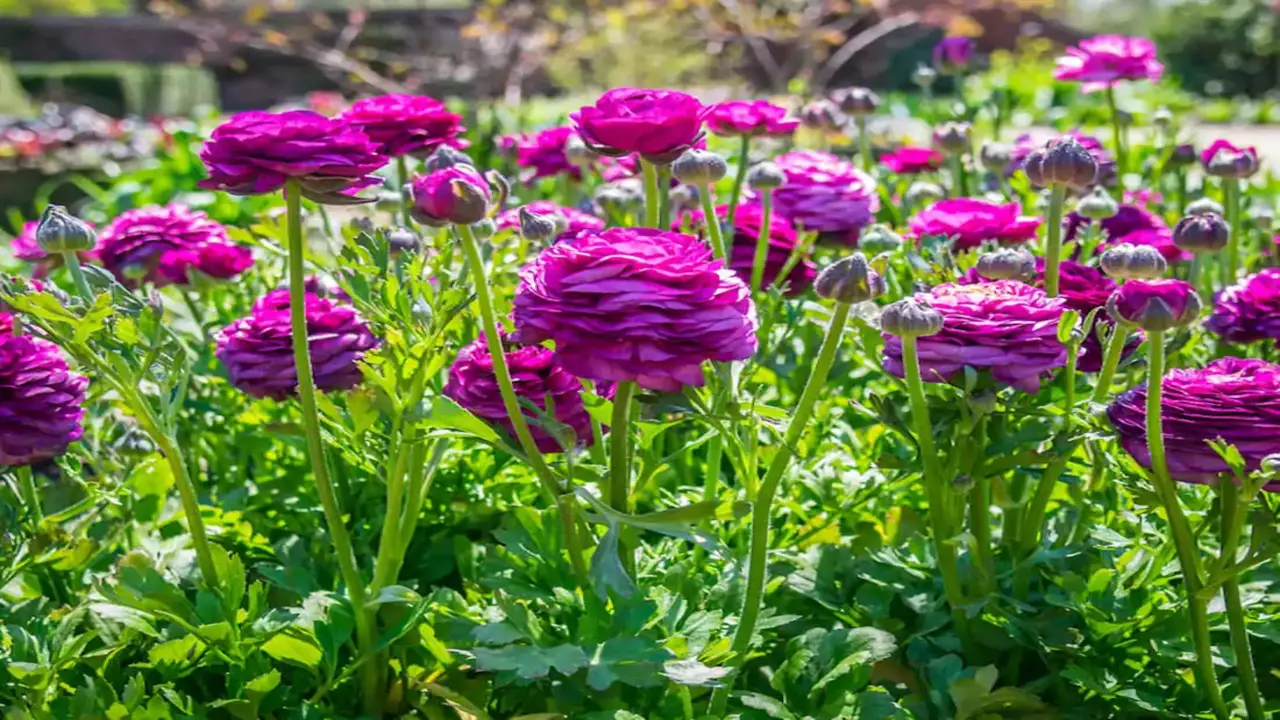
When selecting the right bulbs for planting ranunculus, there are a few key considerations to remember. First and foremost, choosing healthy bulbs free from any signs of disease or damage is important. Look for bulbs that are firm and plump rather than soft or shrivelled.
Additionally, opting for high-quality bulbs will ensure optimal plant development and a higher chance of success. Take your time when selecting bulbs; don’t be afraid to inspect them closely before making your final decision. Choosing the right ranunculus bulbs will set yourself up for a successful planting season and beautiful blooms.
Preparing The Soil
Before planting ranunculus bulbs, it is crucial to prepare the soil properly. Creating the ideal soil conditions will promote healthy growth and vibrant blooms. To get your soil ready, follow these helpful tips. Start by ensuring the soil is well-drained and fertile, as ranunculus bulbs prefer moist but not waterlogged conditions.
Clear any weeds or debris from the planting area, and add organic matter like compost for added nutrients. It’s also important to provide the bulbs with full sun or partial shade, depending on your growing zone. By carefully preparing the soil, you can set the stage for successful ranunculus bulb growth.
Planting The Bulbs
Follow these easy instructions to plant ranunculus bulbs in your garden successfully. Start by selecting healthy bulbs for optimal growth. Choose high-quality ranunculus bulbs that are suitable for your growing zone. Before planting, soak the corms in water for a few hours to hydrate them.
Find a spot in your garden that receives full sun or partial shade. Ensure the soil is well-draining and amend it with compost if necessary. Plant the bulbs with the “claws” facing down, about 2-3 inches deep and 6-8 inches apart.
Water the bulbs thoroughly after planting and keep the soil moist but not waterlogged throughout the growing season. With proper planting techniques, your ranunculus bulbs will bloom into beautiful flowers with straight stems and long vase life.
Watering And Fertilizing
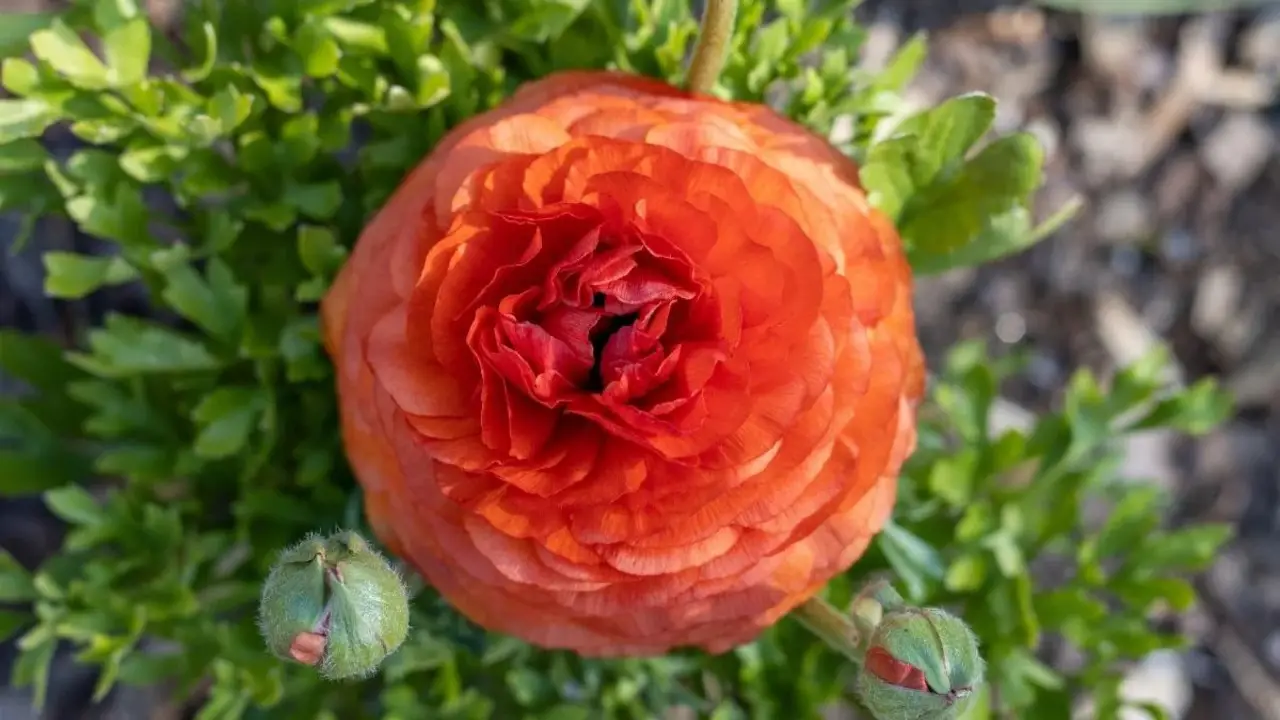
Understanding ranunculus bulbs’ watering and fertilizing needs is essential for their healthy growth. To ensure vibrant ranunculus flowers, it’s important to water and fertilize these bulbs properly. Providing the right amount of water and nutrients is crucial. When watering, use tepid water to ensure the soil is moist but not waterlogged.
Fertilize the bulbs with a balanced fertilizer during the growing season to promote strong blooms. Ranunculus bulbs thrive in full sun or partial shade, so choose the ideal location. Remember to give them plenty of sunlight and protect them from frost if necessary. With proper watering and fertilizing, you’ll enjoy beautiful ranunculus blooms.
Mulching For Optimal Growth
Mulching is a beneficial practice for the optimal growth of ranunculus bulbs. By using mulch, you can provide several advantages to your plants. It helps protect and nourish the bulbs, promoting their growth and development and enhancing the overall health of your ranunculus flowers. To properly apply mulch, soak the corms in tepid water for a few hours before planting.
Once planted, cover the soil around the bulbs with a layer of mulch, such as dry moss or straw. This will help retain moisture, suppress weeds, and regulate soil temperature. Remove the mulch in late spring or early summer to allow the ranunculus blooms to emerge. With mulching, you can ensure that your ranunculus bulbs thrive in a healthy and favorable environment.
Protecting Against Pests And Diseases
To ensure the health and longevity of your ranunculus bulbs, it is important to take preventive measures against pests and diseases. You can safeguard your bulbs and maintain their integrity by implementing effective strategies. Protecting your ranunculus bulbs from common pests and diseases will allow them to thrive and produce beautiful blooms.
It is recommended to regularly check for signs of pests or diseases and take prompt action if necessary. Additionally, providing your bulbs with proper care, such as placing them in a full sun or partial shade location, ensuring proper watering and fertilizing, and storing them in a cool and dry place during their dormant state, will further minimize the risk of pest infestations and diseases affecting your ranunculus bulbs.
Tips For Growing Healthy And Vibrant Ranunculus Blooms

To ensure healthy and vibrant ranunculus blooms, follow these tips. Plant the bulbs in early spring to enjoy their beauty. Before planting, soak the corms in room-temperature water to promote growth. Choose a sunny spot in your garden that receives full sun for optimal results. Make sure to provide well-drained soil to prevent rot and disease.
Regularly water the plants, keeping the soil moist but not waterlogged.- Choose a well-draining location: Ranunculus bulbs prefer well-draining soil to prevent waterlogging and root rot. Ensure that the area you plant them in has good drainage.
- Plant In The Right Season: Ranunculus bulbs should be planted in the fall, around 6-8 weeks before the first frost. This will give them enough time to establish their roots before winter.
- Prepare The Soil: Before planting, prepare the soil by loosening it and removing any weeds or debris. You can also add compost or organic matter to improve soil fertility.
- Plant At The Right Depth: Plant ranunculus bulbs with the “claws” facing down, about 2-3 inches deep and 4-6 inches apart. This will ensure they have enough space to grow and develop healthy blooms.
- Water Regularly: Ranunculus bulbs require regular watering, especially during dry spells. Keep the soil consistently moist but not waterlogged. Avoid overhead watering, as this can lead to fungal diseases.
- Provide Sun And Shelter: Ranunculus plants thrive in full sun or partial shade. However, they may benefit from some protection from strong winds or extreme heat, especially in hotter climates.
- Mulch For Insulation: Applying a layer of mulch around your ranunculus plants can help insulate the bulbs during winter and prevent frost damage.
By following these tips, you can ensure that your ranunculus bulbs grow into beautiful, vibrant blooms that will brighten your garden.
How To Care For Ranunculus Bulbs
Caring for ranunculus bulbs ensures their successful growth and vibrant blooms. Following these care tips, you can enjoy beautiful and healthy ranunculus flowers throughout their blooming season. Here are some tips on how to care for ranunculus bulbs:
- Planting: Choose a location with well-draining soil and full sun exposure. Dig a hole about 2-3 inches deep and place the bulb in the hole with the “claws” facing downwards.
- Watering: Ranunculus bulbs require consistent moisture, especially during active growth. Water the bulbs thoroughly after planting and continue to water regularly, keeping the soil evenly moist but not waterlogged.
- Fertilizing: Provide your ranunculus bulbs with a balanced fertilizer every 4-6 weeks during their growing season. This will help promote healthy growth and abundant blooms.
- Mulching: Apply a layer of mulch around the base of the plants to help retain moisture, suppress weeds, and regulate soil temperature.
- Staking: As ranunculus plants grow taller, they may require staking to support their stems and prevent them from bending or breaking under the weight of their blooms. Use stakes or plant supports to keep the plants upright.
- Deadheading: Remove spent flowers regularly to encourage continuous blooming and prevent seed formation. This will redirect the plant’s energy towards producing new blooms.
- Overwintering: In areas with cold winters, ranunculus bulbs may need protection from frost. Consider lifting the bulbs in late autumn or covering them with mulch or straw for added insulation.
Common Problems With Ranunculus Bulbs
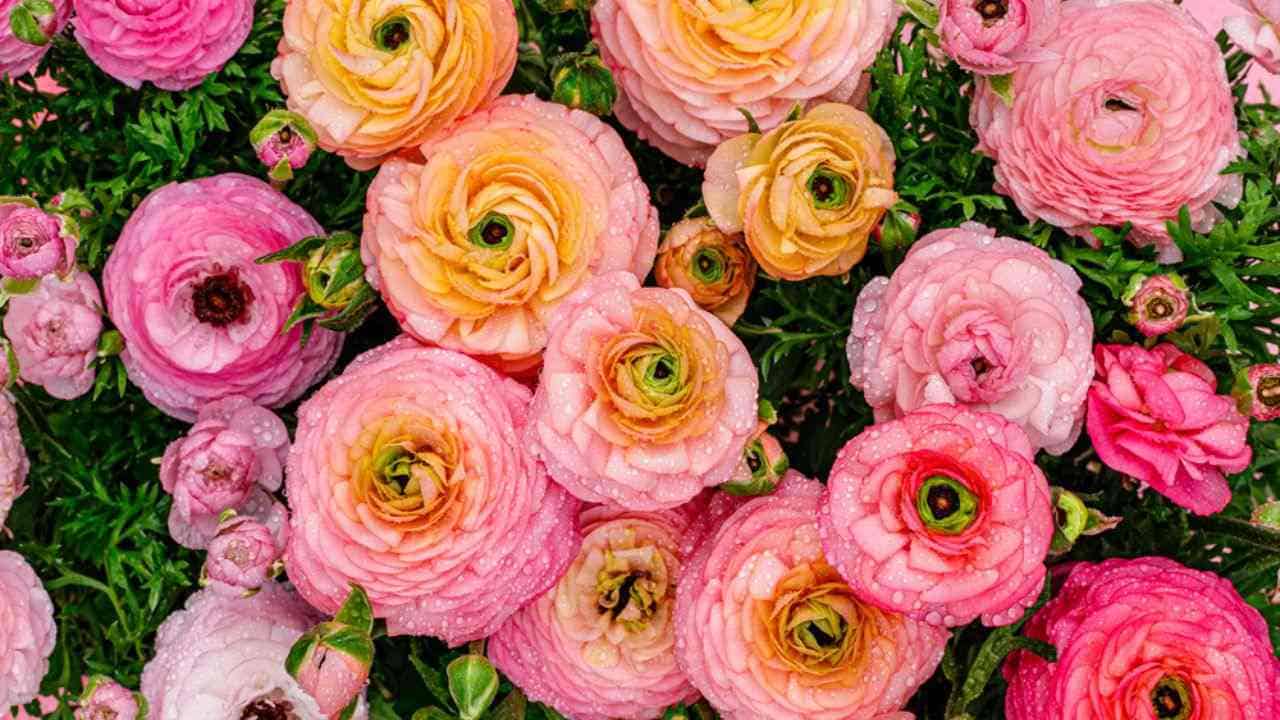
Planting ranunculus bulbs can be a rewarding experience, but it’s not without its challenges. Here are some common problems that you may encounter when planting ranunculus bulbs:
- Poor Drainage: Ranunculus bulbs prefer well-drained soil, so if your soil is heavy or clay-like, it may retain too much moisture and cause the bulbs to rot. To solve this problem, amend the soil with organic matter or consider planting the bulbs in raised beds or containers.
- Pests And Diseases: Ranunculus bulbs are susceptible to pests such as aphids and snails, as well as diseases like crown rot and powdery mildew. To prevent these issues, keep the garden clean and debris-free, regularly inspect plants for signs of damage or disease, and treat affected plants with appropriate organic or chemical controls.
- Insufficient Sunlight: Ranunculus bulbs need full sun to thrive and produce abundant blooms. If your garden has shady spots or is obstructed by trees or buildings, consider planting the bulbs in containers that can be moved to sunnier areas or choose a different location for your ranunculus garden.
Awareness of these common problems and taking proactive steps to address them can increase your chances of success when planting ranunculus bulbs. With proper care and attention, you’ll be rewarded with beautiful blooms that will brighten your garden for years.
Conclusion
To sum up, planting ranunculus bulbs can be a rewarding and enjoyable experience. Following the step-by-step guide outlined above, you can ensure that your ranunculus blooms grow healthy and vibrant. Remember to select the right bulbs, prepare the soil properly, and provide adequate watering and fertilizing.
Mulching can also help optimize their growth and protect against pests and diseases. Caring for ranunculus bulbs involves regular maintenance, such as deadheading spent flowers and providing proper sunlight and temperature conditions.
Be aware of common problems that may arise, such as root rot or fungal infections, and take proactive measures to address them. With a little patience and care, you’ll soon enjoy the beauty of these stunning flowers in your garden.
Frequently Asked Questions
1.What Month Do You Plant Ranunculus Bulbs?
Ans: Ranunculus bulbs are best planted in the fall, usually between October and November. This timing allows the bulbs to establish a strong root system before the spring blooming. Choose a sunny spot with well-draining soil, water deeply after planting, and continue watering once a week until they sprout.
2.Do You Need To Soak Ranunculus Bulbs Before Planting?
Ans: Soaking ranunculus bulbs before planting is recommended. This helps the bulbs absorb water and aids in germination. Use room temperature water, soak for 2-4 hours, and change the water every hour to prevent rotting. Plant the bulbs with their “claws” facing downwards, about 2-3 inches deep.
3.Which Way Do You Plant Ranunculus Bulbs?
Ans: When planting ranunculus bulbs, ensure that the pointed ends, known as “claws” or “fingers,” face downwards. Plant them about 2-3 inches deep and space them 4-6 inches apart to allow growth. After planting, water the bulbs and moisten the soil throughout their growing season.
4.Do Ranunculus Come Back Every Year?
Ans: Ranunculus bulbs can come back yearly in warmer climates as they are tender perennials. However, the bulbs must be dug up and stored indoors in colder climates during winter. Let the foliage die back naturally before digging it up for proper care, and storage is important.
5.When Should I Plant Ranunculus Bulbs?
Ans: Ranunculus bulbs should be planted in the fall, typically from October to December. The ideal time to plant them may vary depending on your climate zone. Plant the bulbs when the soil temperature is between 50 and 60 degrees Fahrenheit. You can plant them in late winter or early spring in warmer climates.







